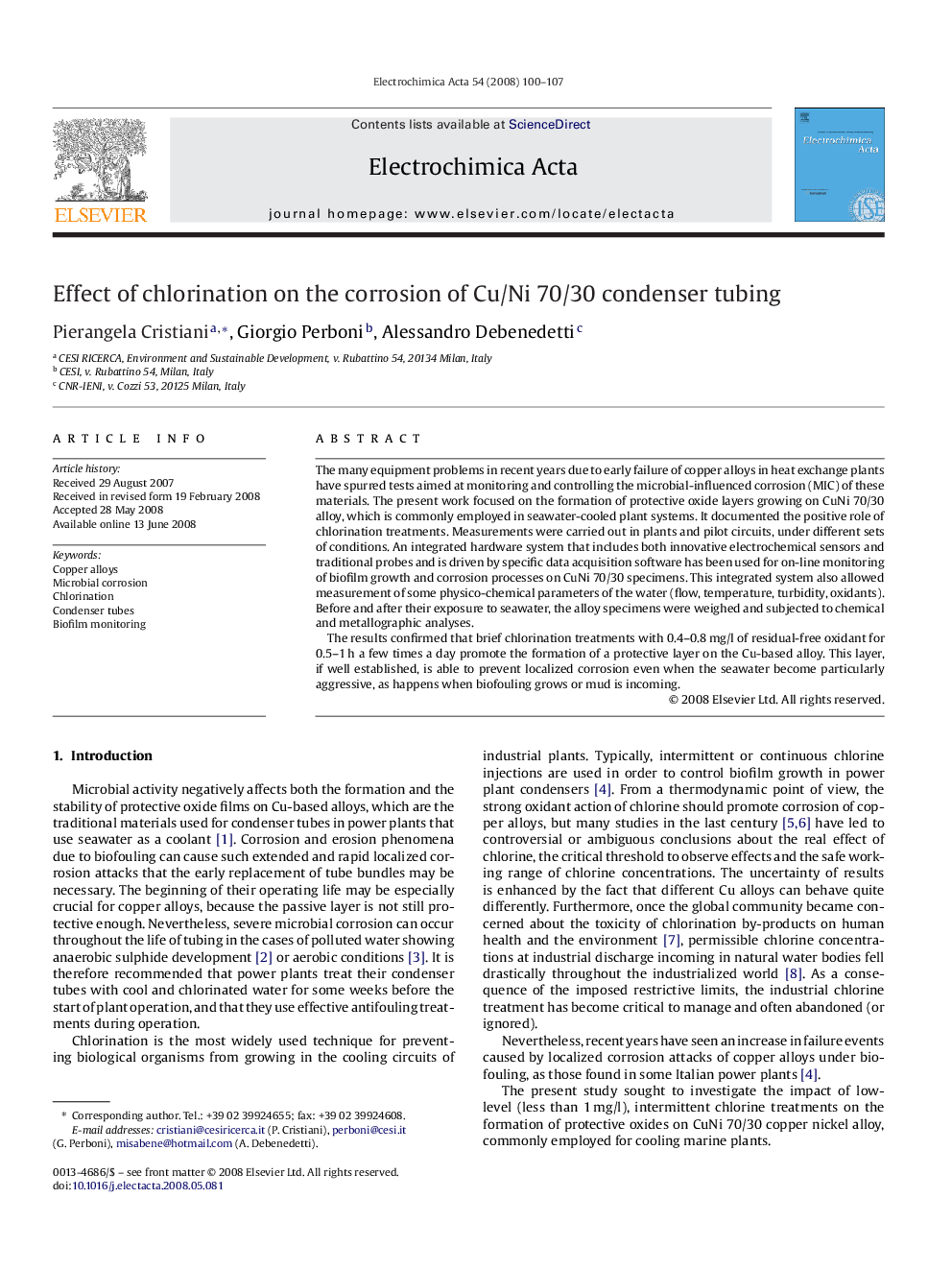| Article ID | Journal | Published Year | Pages | File Type |
|---|---|---|---|---|
| 194490 | Electrochimica Acta | 2008 | 8 Pages |
The many equipment problems in recent years due to early failure of copper alloys in heat exchange plants have spurred tests aimed at monitoring and controlling the microbial-influenced corrosion (MIC) of these materials. The present work focused on the formation of protective oxide layers growing on CuNi 70/30 alloy, which is commonly employed in seawater-cooled plant systems. It documented the positive role of chlorination treatments. Measurements were carried out in plants and pilot circuits, under different sets of conditions. An integrated hardware system that includes both innovative electrochemical sensors and traditional probes and is driven by specific data acquisition software has been used for on-line monitoring of biofilm growth and corrosion processes on CuNi 70/30 specimens. This integrated system also allowed measurement of some physico-chemical parameters of the water (flow, temperature, turbidity, oxidants). Before and after their exposure to seawater, the alloy specimens were weighed and subjected to chemical and metallographic analyses.The results confirmed that brief chlorination treatments with 0.4–0.8 mg/l of residual-free oxidant for 0.5–1 h a few times a day promote the formation of a protective layer on the Cu-based alloy. This layer, if well established, is able to prevent localized corrosion even when the seawater become particularly aggressive, as happens when biofouling grows or mud is incoming.
